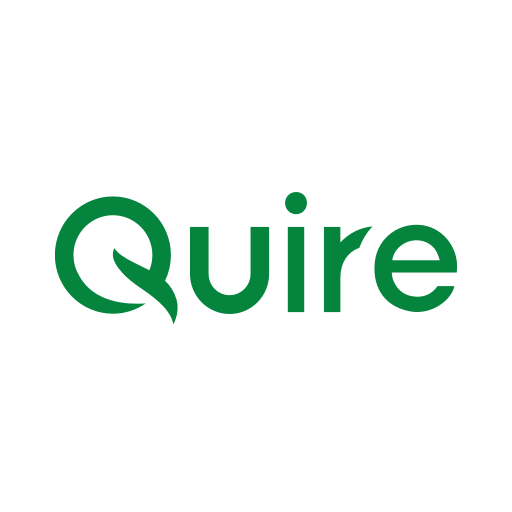productivity tips · Aug 4, 2020
How to Boost Teamwork Performance with Transparent Communication

Transparency has a couple of different meanings. One is the literal sense of being transparent, another is, “the quality of being done in an open way without secrets.”
In terms of task management, it means having a system that allows all team members relevant access to necessary information. And done in a way that is efficient and easy.
There are those project managers who believe that transparency can actually be harmful and even risky to a project’s success. However, transparency in a project has benefits that will always outweigh any potential risks.
Different kinds of teams also have their own issues to tackle when it comes to transparency. For example, the way a remote team communicates differs from how an in-the-office team will communicate. And this is often reflected in how productive a team is.
In this article we’re going to look at how to improve team communication transparency whether you’re working remotely or in the office. And how this benefits team productivity in a remote work culture.
Team communication transparency
As mentioned, there are those project managers who feel that transparency poses risks to the success of a project. The problem with this is that leaving employees in the dark about important information often leads to tasks being done incorrectly.
Which isn’t intentional on the employees’ part. After all they can only work with what they’ve got. This is why transparency in team communication is vital. The advantages of transparency are many, but we’ve selected three to illustrate the point.

3 reasons why transparency in team communication is vital
1. Create Trust and teamwork
Being transparent in a team is about building openness, trust, and honesty. Transparency can make a team work better as a cohesive unit. Teams working together on a project tend to trust each other more when they are encouraged to know, and understand, what the whole team is doing. This also engenders a more collaborative nature which goes a long way to helping a team succeed at their individual tasks as well as completing the project on time.
2. Ensure work stays on track
When each team member knows what is expected of them, and of each other, it helps to prevent delays. Missed milestones and delays can either disrupt or kill a project. That is why transparency in team communication is necessary to ensure there are bottlenecks. And to ensure situations can be resolved before they become problems.
3. Improve a team’s productivity
Access to all the necessary information about a project has been shown to improve productivity. Having access to key information allows team members to keep working, rather than waiting for a project manager to feed them tasks piecemeal. Which is a slow, tedious, and often unnecessary way of managing tasks. Additionally, having access to all the necessary information makes working collaboratively with other members on a project much easier.
Read more on how to improve productivity with Deep Work method.
The difference between transparency in remote teamwork communication and face-to-face teamwork communication
But transparency does look different depending on how your teams operate. Remote teamwork communication is, by necessity, different to face-to-face teamwork communication.
Many have argued that working in an office is the most productive way. While others—especially employees—argue that home has fewer distractions than the office, making it more productive.
In truth, it’s not a question of which environment has few distractions, or more. It’s a question of communication and transparency. Conventional wisdom states that being in an office is more productive, because it’s quicker and easy to have a conversation, make a decision, and get back to work.
But this conventional wisdom pre-dates task management software, and an ever-evolving work environment. Which isn’t to say that working from home is more productive. What it is saying is how you manage your projects, their associated tasks, and your team member’s time is what determines the quality of productivity.
Remote teamwork communication vs in-office teamwork communication
The difference between remote teamwork and in-office teamwork communication can be boiled down to four key areas. These include how meetings are held, where decisions are made, how productivity is measured, and project management.
Meetings: In an office environment, meetings occur exclusively in-office and are seldom recorded. Whereas in a remote teamwork situation, meetings are kept brief, productive, and are recorded for future reference.
Decision making: In a remote teamwork situation, decisions are made online during operating hours. These too are kept on record for future reference. Too frequently key decisions are made around a water cooler or at drinks after work. When this does happen, there’s no record of the conversation, and only hearsay can be passed to team members later on.
Measuring productivity: For in-office employees, being in the office, sitting at their desk was associated with being meaningful or busy work. Remote staff’s productivity is measured rather simply by how much work they achieve rather than the others they spend achieving it.
Project management: In-office project managers are expected to be in the office all the time. For a remote team’s project manager, they are able to work from anywhere with an internet connection. With the right project management software, it’s not where the project manager works, but how well they communicate.
Whether your team is predominantly in-office or remote, transparency can be improved with task management software. And in improving transparency, you are improving the productivity of your team.

5 ways task management software can boost productivity
Transparency is known to improve productivity. The right task management software can boost productivity by improving trust, increasing communication, ensuring greater accountability, customizing permissions, and improving client interactions.
1. Improved trust
Be wary of anyone who tells you trust isn’t an important part of teamwork. High levels of trust are important because it creates:
- The confidence to admit if mistakes are made, and correct them.
- A culture of authenticity and joy.
- A willingness to help others succeed in their tasks.
- The tenacity to keep working, even if there are setbacks.
- The ability to accept tough feedback, as well the confidence to provide it.
But, of course, trust is not an easy thing to build. To do so requires repeated personal, helpful, and productive interactions. And these interactions can really only take place in an environment that is transparent. And it doesn’t matter if the environment is in-office or digital.
2. Increased communication
Strong communication is the most effective way to promote transparency. Concise, clear, and considerate communication enables collaboration by making the process easier for team members to discuss issues and ideas.
Using a top-grade project management software (like Quire), it provides team members with several communication channels. Project management software allows team members to tag specific people, send instant messages, and leave comments for all to see.
With a cloud-based storage, the software is able to retain all notes so that people can look at them if necessary.
3. Greater accountability
It’s expected of team members in transparent environments that will hold each other accountable. The right project management software will include features that make accountability possible.
In a project platform, it can be helpful to see each person’s task list, to see which specific tasks they’ve been assigned. So, no one’s unsure who’s responsible for which tasks, and their due dates.
4. Customized permissions
Transparency doesn’t have to be total for it to be effective. After all, there are some confidential aspects and information of a contract or project that may need to remain confidential. Quire’s task management software makes it possible to provide team members with different permission levels.
This way teams can still do the work they need to do collaboratively, but not all team members need access to billing information. Permissions can be applied to everything from tasks and messages to entire projects. And these permissions are not set in stone—it’s not difficult for permissions to be changed as needed.
5. Better client interactions
Project management software is able to create reports to track metrics. The sort of metrics that clients want to know about like billable hours.
Customizable dashboards allow project managers to create several dashboards. For example: you can have a dashboard for internal task management, and another that has a breakdown of numbers and other data necessary for client calls.
By being transparent with clients, they are often happier for being informed.
How a task management software like Quire can help with transparency in team communication
If you are looking to create more transparency, build trust, and generally improve your team’s productivity and efficiencies, task management software is the answer you’re looking for.
Quire’s project management software is one of the best ways to organize your projects, communicate effectively, and collaborate effectively online, and in real time.
That’s all for today! What's your win today? Let us know in the comment section below or tweet us at @quire_io 😍


